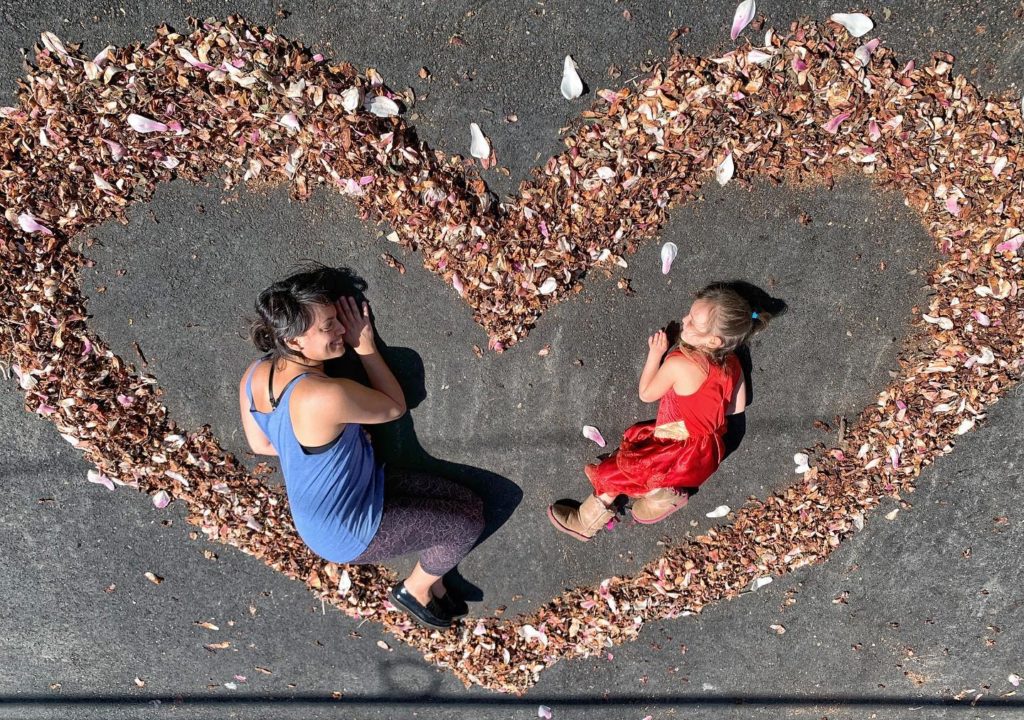We know that information is important. But we almost never ask what it’s important for. We don’t bother because it’s obvious. Information is for knowing things. And knowing things is how we make decisions about what we think and what we do.
Enter the coronavirus pandemic, this force that’s made life unrecognizable for pretty much all of us. If you’re lucky, you’re working from home, calling friends, taking it easy on the toilet paper. If you’re not, you’re out of a job, or even in the hospital, fighting for your life while others risk theirs to help.
What is information for, when no one knows what life will look like next month? What do facts resolve when our leaders are writing the playbook as they use it, when no living human being has been through anything like this before? How do you pull truth, in other words, from so much uncertainty, now that our plans are on pause, our routines are history, and everyone’s on edge?
These are the questions I’ve been asking as I look at news from mainstream and more conservative outlets and wonder what it’s all adding up to. On Tuesday, hundreds of you joined a Braver Angels debate on a juicy topic: “Resolved: The mainstream media coverage of COVID-19 is doing more harm than good by stirring up fear and panic instead of informing with facts and truth.”
Reading the news these days is scary. No one in my virtual debate room— left or right— took issue with that. I read what felt like every headline in the early days of the shutdown, unloading the controversies to my husband night after night until he told me, gently, that it was keeping him from sleeping. It was keeping me from sleeping, too.
As for how much our media are “informing with facts and truth,” debaters gave kudos to local media— the best “news you can use” in a pandemic. Otherwise, there was plenty for them to criticize. Sensationalism. Click bait. Shouting matches. Political bias, apparently, everywhere. We can’t all agree on what sources to trust. But we can agree that whatever information is for in this moment, our informers aren’t providing it. At least, not well enough.
And that would be a pretty clear-cut debate— with the media as our monster— if not for two characters we tend to overlook in all of this. One is this remarkably challenging pandemic. The other, of course, is each of us.
It’s a fact of human nature that we prefer to think of ourselves as rational creatures, even though we’re anything but. In fact, there’s an implicit value judgment at the heart of the resolution that’s worth a closer look:
- Stirring up fear and panic = bad
- Informing with facts and truth = good
Simplify the terms, and you’re looking at the age-old debate between emotion and reason:
- Emotion = bad
- Reason = good
Feelings… are messy. We want just the facts, ma’am, uncomplicated by the unknown or the irrational.
And no wonder. Like the jigsaw puzzles we’re working on in quarantine, you just fit those facts together and get a clear picture of the world— right? Trump or your governor said X today, Y number of people have died from coronavirus in your state, your business is eligible for Z dollars in stimulus funds. Snap. Snap. Done.
But somewhere deep down we know it’s not that simple. What Trump or your governor said today could mean nothing tomorrow. There’s reason to doubt if your state coronavirus count is right, or if we know how best to interpret the number. As for the stimulus check: If you’re a business owner wondering how long you can make payroll, or you’ve already had to lay off people you love, a promise for help still leaves lots of open questions.
That’s because like it or not, anxiety is here with us. With you. It’s not practicing good social distancing; it’s having a cup of coffee in your kitchen in its pajamas. And it sure as hell isn’t excusing itself while you read or watch or hear the news to catch up on what’s been going on.
It’s like those trendy adult coloring books people use to calm down: your rational mind draws the lines, while your emotional mind colors well outside of them.
Anxiety is at home with our political leaders, too, following them from their email to their conference calls to dinners with the kids. And it’s with everyone in “the media”— the commentators who count on their worldviews to point the way, and the journalists trying to piece truth together from the facts they have, hoping they’re enough, but knowing they won’t be.
Which brings us back to that big question: during a pandemic, what is information really for? More specifically: What do we need information to do for us? What do we want to do with the floods of information streaming in from all sides?
Curious about that, I went to Facebook and asked my friends to share the one deep-down honest question they most want answered during this crisis. These are just some of the questions they shared back:
- What is my honest-to-God, a priori chance of dying if/when I catch this thing?
- Will my husband, a healthcare worker, stay healthy for the duration?
- How will this change the lives of my children?
- When will the fear of other people go away?
- When will it be safe to go on a first date again?
- When can I see my parents and hug them?
- Is this ever going to end— or is this our new ‘normal’ for years to come?
Notice any patterns in these questions? Two things immediately stood out to me:
- They are very concerned about some critically-important things, like our health, our families, and our futures.
- They can’t yet be answered definitively by anyone, even with all the facts and truth the news media can gather.
Add those two things up— big concerns that hit close to home, and our inability to resolve them— and you’re left with a big, devastating gap. It divides what we desperately want to know from what any of us can know.
What do each of us do with that gap? I’ve worked in journalism for 15 years, and though I’ve never seen anything like the chasm we now find ourselves straddling, the answer is always the same: We do everything we can to try and fill the gap, even when we know we can’t.
From that gap comes our fear. And into it goes our attention.
Did our local media outlet just report the latest statement from government officials on when our state could reopen? Great; we’ll read it. Did an opinion columnist write a piece speculating that the shutdowns might last all year? Ack— OK, we’ll read that, too. Does our favorite 24-hour news network have two talking heads arguing about China, Trump, or the WHO? Let’s watch! Is a Facebook friend sharing a report, from a strange publication, that sounds crazy but is exactly what we’re most afraid of? Let’s share it again.
You see where this is going. Fear can make us so hungry for information that fills the gap, we’ll consume anything we can find— even if we find it in the dumpster— and pass it on.
Could producers of all media share information more responsibly? Absolutely. But there’s a big difference between the journalists of good faith who show the way (I know many!) and the lazy journalists chasing clicks, the shameless partisans exploiting our suspicions, the con artists looking for revenue, and the ideologues who make us fall in love, then tell us who to hate.
Stirring up our fear isn’t difficult.
But fortunately for us, it’s not the only thing in the pot.
The other day I was scanning social media when I landed on a video series by actor John Krasinski (who played Jim on the American version of “The Office.”) It was called “Some Good News,” and in it, John played the part of a news anchor summing up all the inspiring things people are doing for each other in this strange, hard time. They’re making masks. They’re donating food. They’re serenading their loved ones through hospital windows. They’re feeling the fear, and they’re not letting it stop them.
I had read about these acts of compassion in occasional news stories. I’d seen local examples in my Facebook feed. But watching them stitched together, back-to-back, was overwhelming, and I started tearing up. A couple days later, on Easter Sunday, I asked my 5-year-old daughter to join me on a project. Together, we raked the fallen petals from our magnolia tree into the shape of a heart. It was a gift for our neighbors, I told her, and all day they came by, stopping to chat (from a safe social distance, of course.) “Do you like our heart?” my daughter would ask them. They all did.
At Tuesday’s Braver Angels debate, a woman named Linda spoke up. She’d watched one of our leaders seem to dismiss the fear that’s gripped her and so many others to a reporter who’d asked a question about it.
Instead of so much blame and provocation, “I’d like to see more comfort,” she told the group. “How can people get through something like this? But that’s not newsworthy, I guess.”
But it absolutely is!
We can’t get all the answers we need from our media right now. But that’s not all that information in a pandemic has to be for.
At their best, our media will balance their stories of a world in crisis with stories of the courage, solidarity, and empowerment we’ll need to live in it.
And at our best, we’ll interrupt our desperate search for answers to make sure they have more of those stories to tell.
Seen examples of solidarity, courage, and empowerment in your neighborhood, or want to share your thoughts on this column? Email Monica at moniguzman@gmail.com or follow her on Facebook at facebook.com/moniguzman.





5 thoughts on “What is Information For? Fear and Knowledge in a Time of Crisis”
This well puts in layman’s terms what is one of the most vital fields in behavioral economics and behavioral social science in general: risk and loss aversion under uncertainty. Three parameters are shown to be most determinant of behavior under such circumstances:
1. the seriousness of the threat of loss: in the corona virus case this can be death;
2. the level of uncertainty over outcomes and causes: the unknowns concerning this virus, how it spreads, who it effects, its randomness, how many are infected, where it pops up next, how it changes, are all quite acute;
3. the level of control in managing the perceived risk: in the corona case the lack of a vaccine or a sure treatment therapy means people feel a lack of control of their fate.
This helps us understand social and individual behavior under the uncertainty and threat of this contagion and how best to manage and mitigate that behavior.
Yes; this makes a ton of sense. Today I had one of those in-depth conversations on all things coronavirus where we got around to comparing this challenge to other once-in-a-generation challenges in the past, like Vietnam, World War II, the Great Depression. And I thought about one unique element that keeps coming up for me about this one. In past challenges, one of the key ways we helped each other get through everything was to come together. Parades, memorials, rallies, demonstrations, or just consoling a grieving family, being with neighbors and friends, or just finding common unifying diversions — going to the movies, parties, festivals.
Today, thankfully, we have a digital infrastructure to allow for some semblance of “togetherness.” But it is not as universal, or as powerful, as co-presence. So one of the biggest things were are all innovating on right now — and not by choice — is how to be together alone. It’s fascinating and harrowing and, it seems to me, extremely important.
True, but as far as history’s plagues and pandemics go we’re in a much better position than those populations in the past. Just imagine if we lost telecommunications or electricity? Things would degenerate into confusion, chaos, and conflict in a heartbeat. Despite the differences, I think we still harbor those residual fears in our amygdala.
There’s another very important use for info about the pandemic, especially in proximity to an election. As voters, we need to decide who we believe is best equipped to steer us through this pandemic and its aftermath. Evaluating this requires a great deal of information, more than is needed for the purpose of attempting to quell our fears or plan our lives. Whether it’s which Dem to vote for in the primary or who to vote for in November, making a wise choice calls upon us to be informed about past performance.
Admirable point, Erica, but I don’t have a lot of hope it’s going to happen. It takes a lot of effort to get accurate information in this media environment about any high-profile figure or policy result. So the narratives get shaped by selective bias over what media one chooses to consume. And so I believe many people will vote not on the basis of that information but on their intuition and gut feeling: i.e., red or blue. The real variable Monica cites here is the fear associated with heightened uncertainty. Herd behavior tends to prevail in those situations.